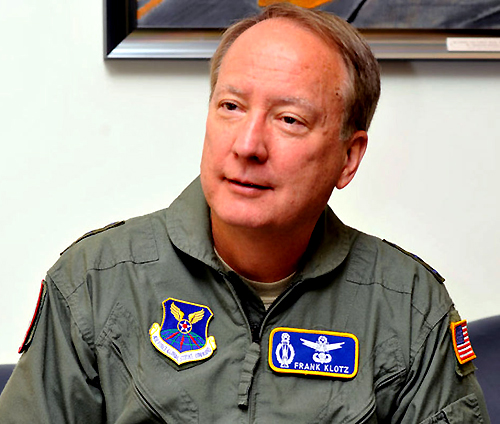 NNSA Administrator Frank Klotz. Courtesy/NNSA
NNSA Administrator Frank Klotz. Courtesy/NNSA
NNSA News:
Counter, respond, and if necessary mitigate a nuclear or radiological incident quickly. This critical mission is the responsibility of the U.S. Department of Energy, National Nuclear Security Administration’s (DOE/NNSA) JTOT (Joint Technical Operation Team) Program, which marks its 20th anniversary this month.
JTOT is an agile, task-organized unit, ready to react at a moment’s notice to support nuclear and radiological weapons of mass destruction incidents. The program taps into technical and scientific expertise across the DOE/NNSA Nuclear Security Enterprise. JTOT evolved from the Nuclear Emergency Support Team program, or NEST.
Addressing members of the JTOT community, NNSA Administrator Frank Klotz emphasized their life-saving role during a nuclear or radiological incident. “Like the personnel who operate our nuclear deterrent, you pray mightily that you never have to perform the mission for which you’ve trained,” he said. “But like them, you’re committed to executing that mission if called upon – because so many lives may depend on your success.”
Since the inception of JTOT in 1997, the program has been a part of an overall U.S. Government strategy to respond to nuclear terrorism events. Jay Tilden, Deputy Under Secretary for Counterterrorism and Counterproliferation for the NNSA, said JTOT is one of the critical tools in the government’s toolbox. “For over 20 years, JTOT has provided unique federal, national laboratory, and production plant nuclear experts to FBI and DoD national response elements for almost any manner of nuclear or radiological terrorist event,” said Tilden
In addition to JTOT, the NNSA provides other deployable elements ready to respond to threats to the national security or to public health and safety:
- Radiological Assistance Program (RAP) is usually the first NNSA response team to assess an emergency situation and recommend on what further steps to take to minimize the hazards in a radiological emergency. RAP assists Federal, State, local, and tribal law enforcement, first responders and public safety officials.
- Radiological Emergency Assistance Center/Training Site (REAC/TS) provides medical consultation for incidents resulting from radiation exposure or contamination in concert with attending physicians and international health organizations.
- Nuclear/Radiological Advisory Team (NRAT) deploys to support Federal, State, local, and tribal law enforcement in response to a nuclear or radiological threat.
- Aerial Measuring Systems (AMS) deploys fixed and rotary wing aircraft in support of public health and safety to detect, measure, and map the release of radiological material or to locate a lost source.
- Accident Response Group (ARG) deploys to support the successful resolution of a U.S. nuclear weapon accident anywhere in the world.
- Federal Radiological Monitoring and Assessment Center (FRMAC) coordinates Federal monitoring and assessment activities with state, local, and tribal law enforcement, in support of public health and safety.
- Nuclear Forensics supports the NNSA and Federal law enforcement with technical nuclear forensics activities associated with a radiological or nuclear device and also with the collection of ground debris at an incident site.
Established by Congress in 2000, NNSA is a semi-autonomous agency within the U.S. Department of Energy responsible for enhancing national security through the military application of nuclear science. NNSA maintains and enhances the safety, security, and effectiveness of the U.S. nuclear weapons stockpile without nuclear explosive testing; works to reduce global danger from weapons of mass destruction; provides the U.S. Navy with safe and effective nuclear propulsion; and responds to nuclear and radiological emergencies in the U.S. and abroad. Visit www.nnsa.energy.gov for more information.

